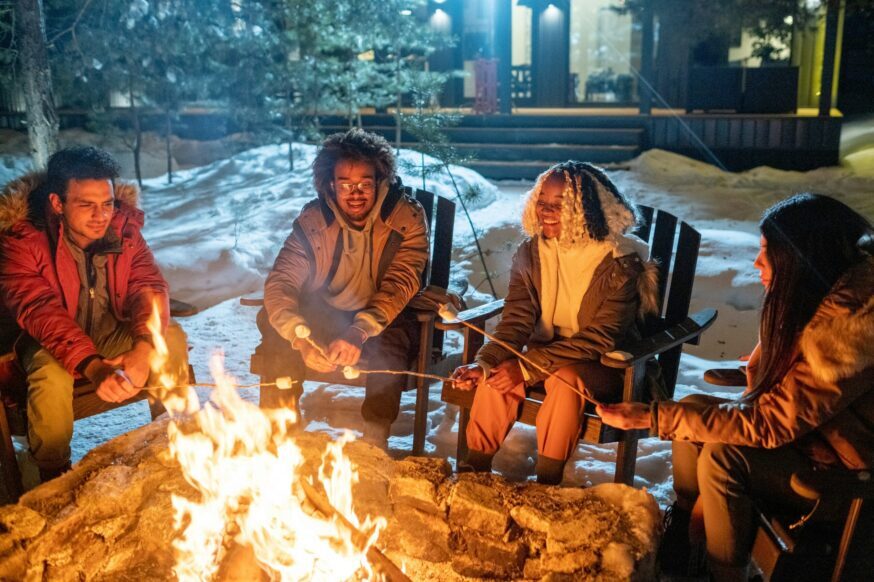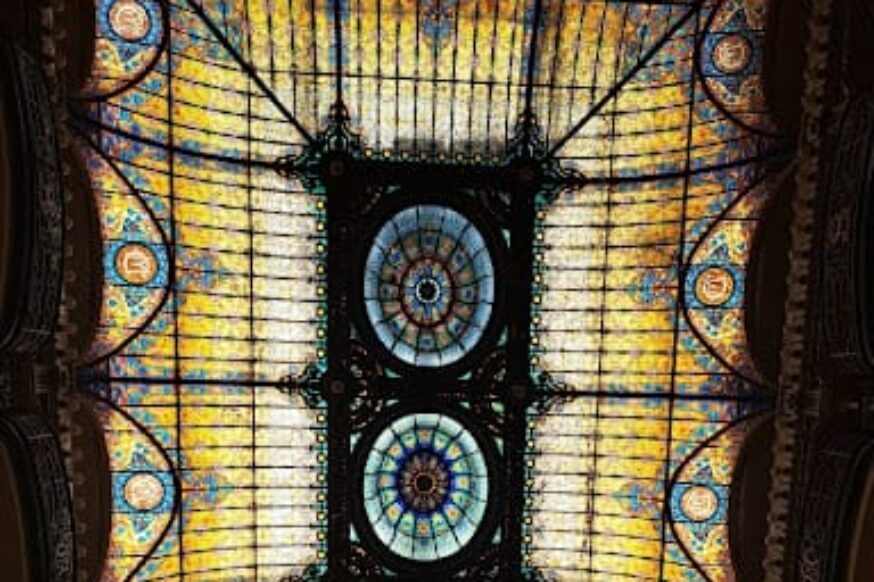Introducing the stories and systems learning circle
Alain de Botton once wrote that storytelling is humanity’s oldest “technology” for creating social change:
“The difference between hope and despair is a different way of telling stories from the same facts.”
At a time when facts are often framed in conflicting ways, it feels more important than ever to reflect on the stories we share, and how they influence our collective story, in the ways we work and relate to each other.
This year, the Centre for Public Impact and Dusseldorp Forum are running a Stories and Systems Learning Circle – a series of sessions designed to explore how storytelling can help shift patterns in how we think, act and organise around change. The Learning Circle brings people together from across a range of sectors, including community, academia, government and philanthropy.
This work builds on many years of collaboration between CPI and Dusseldorp Forum, including two reports on Storytelling for Systems Change and Listening to Understand. Across that work, we kept hearing (again and again) that people want and need spaces and communities to learn with, navigate challenges and deepen their storytelling and story-listening practice.
The Stories and Systems Learning Circle program was co-designed with a group from across sectors, including Olivia Rosenman (UTS Impact Studios), Mia Sturrock (Paul Ramsay Foundation), Maria Fong (VicHealth), Paul Koch (Learning the Macleay) and Michelle Bates (narrative practitioner).
The Learning Circle is our way of bridging the theory and practice of storytelling, seeding conversations across sectors and continuing the exploration of the importance of stories through collective learning. Each session focuses on a different theme or question, anchored in real stories and lived experiences
Lessons from our first Learning Circle
To open the series, our first Learning Circle took place in March 2025, on the topic of How Stories Change Systems. We hosted a panel discussion featuring:
- Gemma Pol, a Wiradyuri, Ngemba and Paakantji woman from a small coastal town in Worimi Country and currently the CEO at Common Ground – a First Nations not-for-profit and collective of people changing systems through storytelling.
- Sam Rye, a systems thinker and storyteller who has spent the last 15+ years working across Australia and Aotearoa New Zealand on social and environmental change projects across a range of areas including biodiversity loss, disaster response, local food, mental health and wellbeing.
- Olivia Rosenman, an award-winning producer and journalist with over ten years of experience working in media and storytelling, currently the Executive Producer of special projects at UTS Impact Studios.
Together, they helped us explore three key themes: how stories shape the systems we live in, the danger of relying on a single story and storytelling from multiple perspectives.
To explore the connection between stories and systems, Gemma shared a short film about both the importance of smoke in First Nations cultures and the stories we tell about what is possible for ourselves, personally and collectively.
“Smoke itself is an example of systems thinking: how everything is in relationship to people and place, to animals and spirit. Systems thinking is something First Nations people have been practising since time immemorial.”
The film featured the knowledge and wisdom of Uncle Steve Cora, from the lands of the Yugambeh people, inviting us to see smoke not just as a cultural practice, but as part of a broader pattern of connection — a living example of stories and systems in motion.
Stories: Light, Glue, Web
Building on this, Sam Rye referred to Ella Saltmarshe’s work to give us some framing on ways stories can be used:
- Story as Light: Stories illuminate the past, present, and future, thus lighting up the paths of change.
- Story as Glue: Stories build community through empathy and coherence, enabling people to connect across differences, and generate narratives that hold together groups, organisations, and movements.
- Story as Web: Stories help us see and reauthor the web of narratives we live in. In doing so, we can change the personal, cultural and mythic narratives that frame our world and influence our worldview.
Building on Story as Web, Sam posited that narrative change can be seen as an effort to intentionally change those deep story patterns. He likened it to reshaping a mycelial network of collective meaning and worldviews, to co-create different kinds of outcomes and systems.
Olivia Rosenman suggested that stories can also be a gateway to understanding systems and developing empathy for those in systems we might not have personal experience of. In her work on the podcast Welcome to Blacktown, Olivia and the Impact Studios team conducted almost 100 interviews with people connected to the Sydney suburb of Blacktown. Through these personal stories, they built a layered picture of what helps a community thrive — not through data or systems maps alone, but through human detail.
This kind of storytelling has been described by The Good Shift as building up “pictures of systems”. Pictures of systems can be created through individual narratives and mapping of people’s experiences, rather than starting with the mental construct of a system in the abstract. Using pictures of systems can give us another window into the interrelationships that underpin complex social issues.
One participant raised that thinking of stories as a tool alone could pose its own risks:
“If we see stories as mainly tools for (systemic) change, acting as light, glue, forces for good and for harm, could we be at risk of underestimating their power? We might mistakenly think we are in control of them, when often, once created, stories control and shape us.”
This led us to two additional themes, the danger of a single story and the need to hear stories from many points of view.
The Danger of a Single Story
CPI’s Listening to Understand report highlighted the danger of relying on a single story as a basis for decision-making. In our first Learning Circle, we spoke about the “shadow side” of stories and how they have been used to marginalise and disempower. Many government policy decisions have historically been made from the perspective of one dominant narrative, perpetuating dominant narratives and shutting out pluralism. As Gemma said, “stories can colonise and stories can heal”.
One example of the danger of the single story that was shared by the panel related to the climate crisis. In his TED talk, documentary filmmaker Damon Gameau speaks about the dominant single story that human beings are separate and superior to nature. This belief, repeated over time, has shaped how many societies treat the natural world — as something to extract from or control, rather than something we’re part of.
Olivia reflected that stories like these are often so embedded that we don’t see them clearly. Part of the work is learning to notice the stories that shape our world — especially the ones we take for granted.
Storytelling from multiple perspectives
A possible antidote to the danger of a single story is cultivating the practice of storytelling from multiple perspectives. One approach to storytelling for systems change is to “stitch together” stories from different viewpoints, rather than simply telling one story from a single perspective. A quilt of stories might have more power to shift a system than a single story told deeply from a single perspective.
Gemma shared Common Ground’s work during the Australian Voice referendum in 2023. During the referendum, Common Ground didn’t campaign for a specific policy position but created a collective space for multiple voices.
“First Nations people don’t always agree, we all have different theories of change and different pathways to justice. Common Ground held that space for yarns about justice, love, sovereignty, resistance and care, at a moment where the public conversation reduced us to one narrative.”
In our session, we also shared a fictional story about a government program and explored it from three perspectives: government, philanthropy and community. We then reflected on the following questions:
- What do we gain and what do we lose by adding multiple perspectives to a story?
- How do we reconcile multiple perspectives on a story with empathy and understanding?
- How do we hold the potential conflict and power imbalance?
A key reflection was that we tend to think we know where a story is going. In doing so, we can unwittingly fall into a narrative that casts the government as the ‘villain’ and the community as the ‘hero’. Slowing down and making time for deep listening is an antidote that allows for greater nuance and complexity to emerge, especially when listening to multiple perspectives. We also heard that stories that emerge from multiple perspectives have power in and of themselves, despite individual and institutional power imbalances.
What’s next
Our Learning Circle series will continue in May 2025, where we will explore different forms and traditions of storytelling.
Stay connected to follow along with what we’re learning — and the questions we’re asking next.



